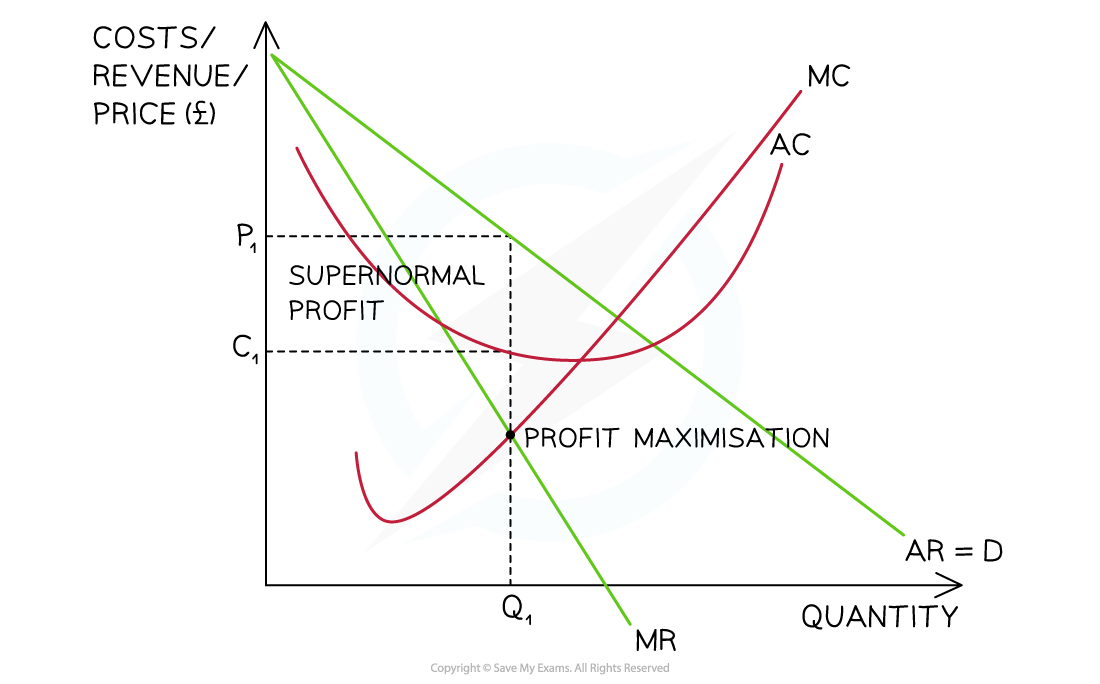- 翰林提供学术活动、国际课程、科研项目一站式留学背景提升服务!
- 400 888 0080
Edexcel A Level Economics A:复习笔记3.2.1 Business Objectives
Profit & Revenue Maximisation
Profit Maximisation
- Most firms have the rational business objective of profit maximisation
- Profits benefit shareholders as they receive dividends & also increase the underlying share price
- An increase in the underlying share price increases the wealth of the shareholder
- Profits benefit shareholders as they receive dividends & also increase the underlying share price
- To achieve profit maximisation firms, follow the profit maximisation rule
- When marginal cost (MC) = marginal revenue (MR) then no additional profit can be extracted by producing another unit of output
- When MC < MR additional profit can still be extracted by producing an additional unit of output
- When MC > MR the firm has gone beyond the profit maximisation level of output
- It is making a marginal loss on each unit produced beyond the point where MC = MR
- In reality, firms may find it difficult to produce at the profit maximisation level of output
- They may not know where this level is
- In the short term they may not adjust their prices if the marginal cost changes
- Marginal costs can change regularly and regular price changes would be disruptive to customers
- In the long-term firms will seek to adjust prices to the profit maximisation level of output
- Firms may be forced to change prices by the Competition Commission
- The profit maximisation level of output often results in high prices for consumers
- Changing prices changes the marginal revenue

The profit maximisation level of output occurs at Q1 where MC = MR resulting in a market price of P1
Diagram Analysis
- This firm has market power as the MR and average revenue (AR) curve are downward sloping
- At the profit maximisation level of output (MC = MR)
- The selling price is P1
- The average cost is C1
- The supernormal profit =
